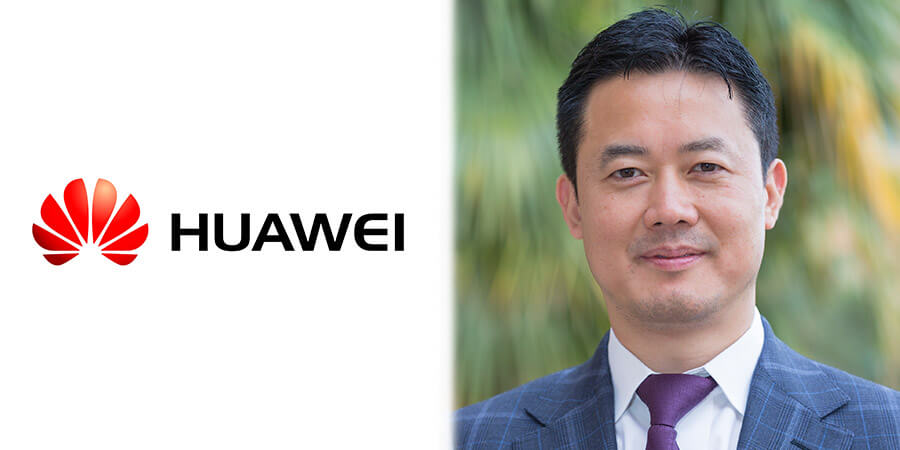Since the beginning of time, millions of organism have come to life briefly and just as quickly faded from existence. A few live on in our memories: the Dodo bird, the Woolly Mammoth, the Passenger Pigeon. The vast majority have long faded to obscurity.
Other species, however, have survived the test of time. Crocodiles roamed the planet alongside dinosaurs. Sharks infested our oceans even before then. Why do some species die, and others survive? They adapt to the world changing around them.
Like organisms, organizations must adapt and evolve, or be left behind. In the age of Digital Transformation, to adapt and evolve means to deploy the most cutting-edge ICT technologies to conquer new challenges.
As the world grows increasingly digital, there is growing strain on existing IT infrastructure. Organizations which fail to adapt with more agile technology risk facing unhappy customers, weak performance, and eventually losing revenue to their more nimble competitors.
At Huawei, our goal is to nurture a digital ecosystem which will empower our partners and customers to flourish through digitalization. We create the technology that enables companies to navigate the changing times, and then help them implement it. Through our vast and varied portfolio of products and solutions, we equip companies to survive and thrive in the Digital Era.
Again and again, we have seen how ICT acts as a lifeline to companies struggling to stay afloat.
This was the case for Enel, a leading global manufacturer and distributor of electricity and gas. As a multinational company, Enel has expanded to over 30 countries and owns the largest distribution grid network in the world. To accelerate its global growth and improve office efficiency, Enel had introduced bandwidth-consuming services such as desktop cloud, mobile office, and videoconferencing. But its original network could not keep up with these new services due to complex network structure, high latency, and low network speeds. Enel was suffering from reduced profitability and increased inefficiency.
To tackle these challenges, Enel selected Huawei's Agile POL solution, an innovative approach which uses a flat network architecture and is composed of converged OLT, passive Optical Distribution Network (ODN), and Optical Network Units (ONUs). Thanks to this solution, Enel radically enhanced its network performance, reduced energy consumption by over 60 percent, saved 80 percent valuable space - and accomplished all this with 50 percent higher deployment efficiency and over 50 percent lower OPEX!
By embracing digitalization, Enel found a new way to deliver smarter, faster, and more economical OA services, with simpler deployment, and less space and energy. As their case illustrates, organizations which adapt new ICT technologies can weather the changing times and surmount any obstacles.
At Huawei, we take pride in our ability to adapt and evolve. We credit our agility to our passion for innovation, and attribute our success to our continuous investment in R&D, which has totaled 90Bn in the past 30 years. We are committed to continuing to create new technologies which will accelerate the digital transformation of traditional industries.
At MWC 2018, for example, we were proud to announce the launch of our Intent-Driven Network solution. This exciting new software tackles a key challenge in the industry: end users are demanding faster provisioning of services, quicker fixes for network breakdowns, and have lower tolerance for breaks anywhere in the chain that might affect their network service quality. Previous operations and maintenance (O&M) systems, still based squarely on the physical equipment, could not address these needs.
Making use of the most avant-garde cloud, big data, and artificial intelligence (AI) technologies, we launched the Intent-Driven Network solution to meet these demands. This solution delivers networks driven by a business logic and service strategies based around end user experience. They will enable software-defined networks (SDNs) to evolve and maximize business value.
This is only one example; for decades, Huawei has toiled in R&D, investing more of our revenue into research than any of our competitors, and through our labor we have reaped a rich harvest of innovative products and solutions.
We will use these to equip organizations with the tools they need to flourish in the Digital Age.
Our dream is to see all our partners and customers in the Middle East succeed through digitalization.
And our tool is ICT. By bringing the world's most cutting-edge technologies to the region, we will ensure that Middle East organizations adapt, evolve, and thrive in the Digital Era.
By Charles Yang, President of Huawei Middle East









